"The greatest case in KGB history"
Edmond D. Pope, Captain, USN Ret.
Putinís continuing movement back to the Cold War
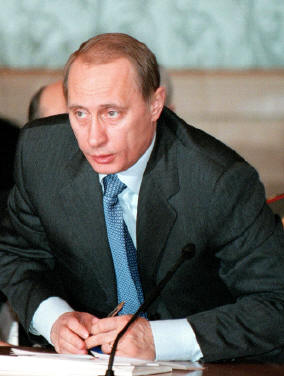 You may have missed it, but two seemingly unrelated, recent events portend Russiaís continuing return to the old, Cold War arms race. The first was the death in August of the notorious, American spy John Anthony Walker in a U.S. Federal prison. The second was the resurrection
of an old Soviet military Industrial Commission known as the VPKÖ with President Vladimir Putin now appointing himself as its chairman. The Walker spy case is arguably the KGBís greatest success story. A wake up call for the Soviet military industrial establishment in the 1970s and 1980s that Putin obviously finds relevant today. Especially as he struggles to cope with the
socio -economic and military challenges he faces when confronting the West and NATO in Europe, Ukraine and Crimea. To understand the current situation from Putinís KGB perspective, one needs to go back -to the final years of the Cold War.
You may have missed it, but two seemingly unrelated, recent events portend Russiaís continuing return to the old, Cold War arms race. The first was the death in August of the notorious, American spy John Anthony Walker in a U.S. Federal prison. The second was the resurrection
of an old Soviet military Industrial Commission known as the VPKÖ with President Vladimir Putin now appointing himself as its chairman. The Walker spy case is arguably the KGBís greatest success story. A wake up call for the Soviet military industrial establishment in the 1970s and 1980s that Putin obviously finds relevant today. Especially as he struggles to cope with the
socio -economic and military challenges he faces when confronting the West and NATO in Europe, Ukraine and Crimea. To understand the current situation from Putinís KGB perspective, one needs to go back -to the final years of the Cold War.
A traitor is unmasked
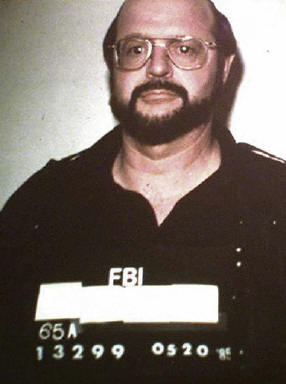 First, for a look back into recent history to an event that continues to this day to result in significant damage to this country. A former KGB officer who briefly defected to the U.S. in 1985 and then re -defected back to the Soviet Union called the Walker treason "the greatest
case in KGB history". Similar comments were made by KGB General Boris Salomatin, who was instrumental in Walkerís initial recruitment.
First, for a look back into recent history to an event that continues to this day to result in significant damage to this country. A former KGB officer who briefly defected to the U.S. in 1985 and then re -defected back to the Soviet Union called the Walker treason "the greatest
case in KGB history". Similar comments were made by KGB General Boris Salomatin, who was instrumental in Walkerís initial recruitment.
It was Monday May 20, 1985 when my office in the Pentagon was notified that the FBI had just arrested former U.S. Navy Warrant Officer John A. Walker, Jr. early that morning in the Washington, D.C. suburbs and charged him with spying for the Soviet Union. We initially had very little detail and were stunned but eager to learn more about the case; we
would soon become distressed by what Walker had been providing. Walkerís treason probably had begun in October of 1967 when he was still on active duty and stationed in the communications department of Submarine Forces, Atlantic in Norfolk, VA. There are several books available on the subject of the Walker gangís treachery and many believe the groupís damage is all history at
this point. John A. Walker, Jr. died in a federal maximum -security prison in Butler, NC on Thursday, 28 August 2014, well short of the 365 -year sentence he was given. By the time John Walker was arrested, he had recruited his older brother Arthur, his only son Michael and his closest friend Jerry Whitworth as agents to help him steal classified US Navy information.
The most damaging materials Walker provided the Soviets involved cryptographic key materials, which, over the years, resulted in them decrypting and reading over one million of our most sensitive messages. A significant part of the decoded messages involved vital operational and technical detail such as reports issued by our submarines while trailing
Soviet submarines undetected in open ocean areas as well as Soviet littoral training areas. In addition to the fact that we were able to conduct such undetected operations for extended periods of time, these messages frequently included technical detail highlighting specific shortcomings of Soviet submarine technology and operations, in addition to limitations of our own
fleet. Such detail over an extended period of several years likely provided a detailed net -assessment and would be considered the Holy Grail to any country. One need only reverse the case to consider what a treasure trove such a resource was. However, when that treasure revealed glaring and numerous weaknesses in oneís own strategic assets it would be received with great
alarm - indeed this was the case in Moscow. Initially, disbelief would turn into horror and generate a crisis situation at the highest levels of the military and government - in our country and in Moscow. From all available information, it appears almost a certainty that Walkerís motivation was solely for his own personal benefit. He bought numerous "toys" and was observed to
be lavish in his spending habits.
A shadowy organization is born in Moscow
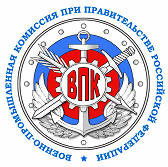 The VPK or Military Industrial Commission was initially created in 1957 during what has become known as the crisis of the "Anti Party Group". Essentially a power struggle between Stalinist hard liners such as Malenkov and Molotov opposed by supporters of Nikita Khrushchev. While Khrushchev liberals
eventually won out, the VPK remained in place and was chaired from itís founding in 1957 through 1963 by Soviet Marshal Dmitry Ustinov. Ustinovís earlier military career had a strong focus on aviation and missilery and it is likely the crisis perceived in the U.S. development of nuclear powered submarines as delivery platforms carrying underwater launch -capable, ballistic
missiles played a significant role in a more responsive military R&D and development structure - i.e. the VPK.
The VPK or Military Industrial Commission was initially created in 1957 during what has become known as the crisis of the "Anti Party Group". Essentially a power struggle between Stalinist hard liners such as Malenkov and Molotov opposed by supporters of Nikita Khrushchev. While Khrushchev liberals
eventually won out, the VPK remained in place and was chaired from itís founding in 1957 through 1963 by Soviet Marshal Dmitry Ustinov. Ustinovís earlier military career had a strong focus on aviation and missilery and it is likely the crisis perceived in the U.S. development of nuclear powered submarines as delivery platforms carrying underwater launch -capable, ballistic
missiles played a significant role in a more responsive military R&D and development structure - i.e. the VPK.
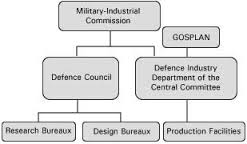 Ustinov later went on to become Minister of Defense under Brezhnev and clearly had a favored place at Brezhnevís side. He also kept a strong interest in the VPK and its utility in his goals for the Soviet military. In his place at the VPK, Ustinov arranged to have his close associate
Leonid V. Smirnov put in that leadership role - a position that Smirnov held until 1983. Smirnov and Ustinovís roles in this critical period and events connected to John Walkerís treason were further bolstered by the aggressive leadership style of Chairman Yuri Andropov at the KGB.
Ustinov later went on to become Minister of Defense under Brezhnev and clearly had a favored place at Brezhnevís side. He also kept a strong interest in the VPK and its utility in his goals for the Soviet military. In his place at the VPK, Ustinov arranged to have his close associate
Leonid V. Smirnov put in that leadership role - a position that Smirnov held until 1983. Smirnov and Ustinovís roles in this critical period and events connected to John Walkerís treason were further bolstered by the aggressive leadership style of Chairman Yuri Andropov at the KGB.
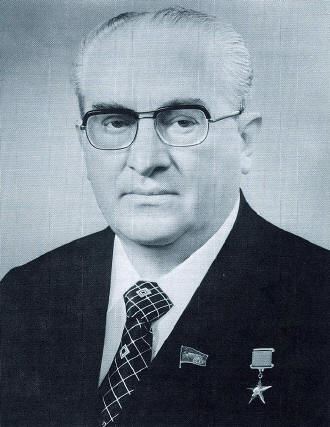
Yuri Andropov |
Andropov had been appointed as the Chairman of the KGB in 1967 following his Ambassadorship in Hungary where he orchestrated the brutal crushing of the attempted 1956 revolution. Following his stint as ambassador to Hungary and assumption of the KGB head, he served in ever more powerful positions inside Moscow. As Chairman of the KGB, Andropov was a
fairly regular attendee and active participant in meetings of the VPK, but it is probable that his control of the Walker data and itís frightening potential thrust both he and the VPK to center stage in many deliberations within the Kremlin. As a direct result of data collected by the Walker gang, the VPK was given vastly increased funding, decision -making and programmatic
authority. One problem did occur that required immediate attention and for which the VPK was otherwise ill equipped to solve and that was assessment of the highly technical and specialized operational nature of much of the data they were reviewing. To address this need, the VPK directed a number of additional organizations be formed and to be subordinate to them. Among these
new structures were special "committees" and panels, most notably within the Ministry of Military Industry, the Ministry of Heavy Machine Building, and the Academy of Sciences, among several others.
While the VPK was likely initially established with a genuine bureaucratic desire to address problems of procurement, delivery, quality and coordination, the Walker revelations transformed that body into something more resembling a crisis command center. It had offices in the Kremlin and had the highest level of access and support, including a special
relationship that took place between three key powerful individuals - Ustinov, Andropov and Brezhnev.
A crisis leads to action in Moscow
The potential significance of the Walker data was immediately recognized by Boris Salomatin, a senior KGB (Committee for State Security) officer within the Soviet Embassy in Washington, D.C. when he first came into contact with Walker in the fall of 1967 and alerted KGB headquarters of its extraordinary potential. Inside tightly controlled compartments
within the KGB is where the "wild fire" really started. Ironically this was only months after hardline communist Yuriy Andropov was getting settled into his new job as Chairman of the KGB. Events were interrupted temporarily after the first messages were decrypted and it was discovered that the KGBís in -house technical talent was baffled and admitted the materials were
beyond their level of understanding. This is likely the point at which Andropov reached out to Minister of Defense Ustinov for help and to alert him of their preliminary findings. The Defense Ministry naval technical help confirmed the validity and provided a critical understanding of the impact of those materials. Of more significance, senior leaders in the KGB and Ministry
of Defense took immediate steps to assess, evaluate and eventually correct many of their own deficiencies discovered in the materials made available by Walkerís treachery.
In addition to the Ministry of Defense Industry, the Russian Academy of Sciences was a key player. Despite in-service rivalry, the GRU (military intelligence) was brought in on at least a limited basis. Inside the Russian Academy of Sciences (RAS), a special commission was established and headed up by the Director of the RAS Anatoly Petrovich
Alexandrov. This council consisted of dozens of institutes from all around the Soviet Union involved in this effort and funding for them was also virtually unlimited. The commission maintained offices in Moscow close to Nobel prize winner A. M. Prokhorovís General Physics Institute.
Perhaps the most prominent institute involved in this effort was the P.P. Shirshov Institute of Oceanology. The three primary missions of this council were to: 1. Evaluate and assess technical information obtained from the decrypted message traffic; 2. Develop R&D efforts to counter their weakest vulnerabilities as discovered in the materials; and 3.
Coordinate with KGB/GRU to collect vital intelligence themselves based on areas of very high interest and/or uncertainties. This high degree of cooperation could only have been achieved under the circumstances of "crisis" and very high-level direction inside the Soviet government. Other Warsaw Pact nations were involved in the collection efforts but were never apprised of the
particular reason for interest that might point to the identity of Walker. RAS members were specifically tasked to attend conferences in the West when allowed and collect information on various entities and to provide a full debriefing upon return to Russia. Several individuals admitted to me during my travels that they did know enough to likely lead to Walkerís identity had
they been allowed to travel outside the Soviet Union and were not in the least surprised by Walker and his associates careers in the U.S. Navy when he was arrested.
Money is no obstacle
First within the KGB, likely in the late 1960ís, and subsequently in the early 1970ís when details were taken to certain members of the Politburo, the "explosive nature" of materials John Walker was providing the Soviets created "near hysteria" and "a true national crisis" albeit only within the upper leadership of the Soviet Union who were considered
necessary and trustworthy to keep the steady stream of revelations under wraps. Early on in the 1970ís, ships of the Shirshov Institute were noted conducting unusual activities in the vicinity of U.S. ballistic missile submarine bases. The purpose was to accelerate any potential sensor development that could lead to improvements in the Sovietís ability to track our strategic,
missile -carrying submarines. Many of these efforts resulted in poor or low quality results, but the nature of the situation was of such importance that almost any idea could gain funding and evaluation.
|
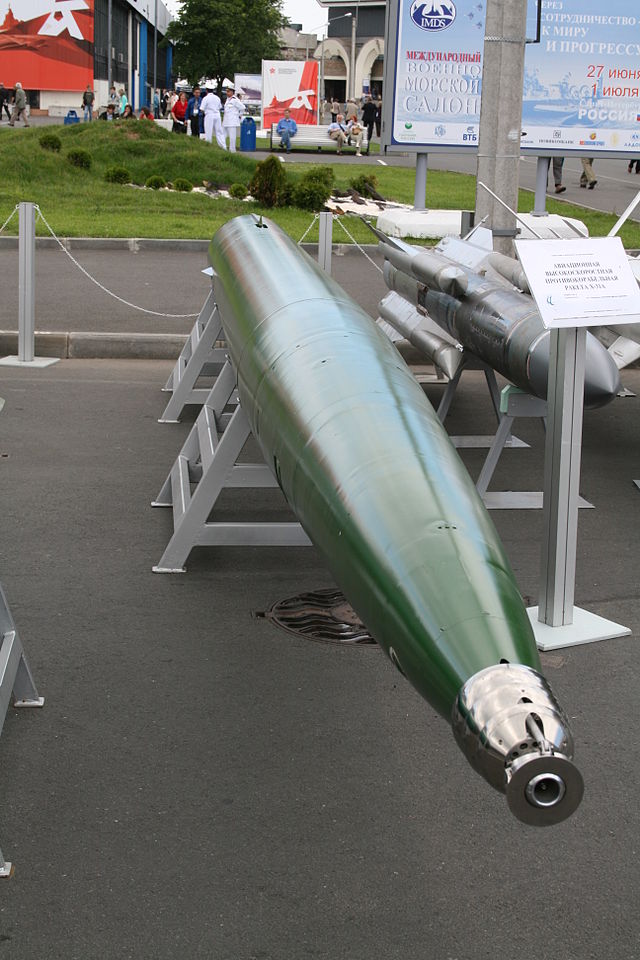
Squall - supercavitating torpedo
|
Most efforts took years to prepare for and begin test and evaluation phases but funding was never an impediment until the mid-to late-1980ís. This time consuming race to catch up was especially true in the platform design and construction programs, from new and/or modified submarines to underwater fixed systems, towed sensors, space-borne systems,
surface ship improvements and aircraft such as the EKRANOPLAN/Wing-In-Ground effect platform. While certain systems of interest such as supercavitating torpedoes had been identified well before Walkerís activities, the crisis of the early 1970ís resulted in adaptation of numerous accelerated development programs.
The development of the supercavitating torpedo had been developed and even patented in the U.S. in the 1960ís and was closely followed by the Soviets. Most of the U.S. work was openly available and collected by the Soviets. Specifically it was within the VPK that programs such as the supercavitating SHKVAL torpedo (Russian for "squall") received its
funding and priority tasking for development.
The Soviets aggressively used the 1973 Nixon-Brezhnev Cooperative Science and Technology program and many other opportunities to more effectively collect militarily significant intelligence as part of their use of the Walker data. One particular technology afforded the Soviets, among many others, under the 1973 S&T agreement was magneto-hydrodynamic
drive, or MHD. In Tom Clancyís book and movie "The Hunt for Red October", MHD was called a "caterpillar drive." In fact, the laboratory test facility for MHD where I was taken, on the outskirts of Moscow, uses a core that had "General Electric: Made in the U.S." stamped on its inner core.
Joint research under the 1973 program to enhance safety of aircraft turbine engine blades was immediately applied to the Soviet BACKFIRE strategic bomber airframe. Cooperation in this effort has been resurrected following the collapse of the Soviet Union. During visits subsequent to 1991 in Kiev, Ukraine, Rybinsk, Kaluga, Novosibirsk, Yekaterinburg and
St Petersburg, Russia, among others the Soviet priority application to military programs was very obvious. Throughout the Nixon -Brezhnev era of cooperation, behind the scenes the authority of the VPK was evident in coordinating high priority intelligence collection and expediting Soviet military program approval and funding. Behind the overall authority of the VPK was the
sense of crisis and overall driving impetus provided from the Walker data.
Fast forward to year 2014: Putin grabs more power
The stunning amount and technical/operational nature of the Walker data provided over an extended period of time to the Soviets resulted in hundreds of investigative and developmental responses within the Soviet system. From the beginning, there was an overriding sense of urgency but with security of the source paramount. It is inevitable in such an
atmosphere that a number of these development efforts ended in folly, but the greater majority resulted in incremental platform updates such as to the VICTOR I, II, III classes of attack submarineís and the YANKEE and DELTA class ballistic missile submarines - each successively more capable. Numerous immediate operational changes were also implemented within the Soviet Navy
such as the "Crazy Ivan" maneuver but also changes in deployment and patrol areas designed to render their strategic submarines less vulnerable.
However, the paranoia generated and instilled within the Soviet/Russian mindset has resulted in a military hardware revamping well beyond those system upgrades to include the very recent introduction of the YASEN-class SSN and BOREI-class SSBN platforms. Both are fitted with an array of new weapons systems and enhanced overall operational capabilities.
The BOREI will deploy with a new class of intercontinental ballistic missile, called the BULAVA (i.e. MACE), which is just completing testing and acceptance trials. Had it not been for the chaos and economic collapse of the Soviet Union, these systems would have become operational at least one decade earlier. I know because I bought a 20 -inch scale model of the BOREI
submarine from a commercial hobby shop in St. Petersburg in 1996. This, and other scale models, were being produced by the Rubin Design Bureau in anticipation of the imminent deployment of that class of submarine, which had been designed there.
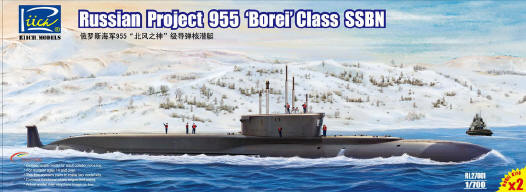
The uncertain times surrounding the collapse of the Soviet Union resulted in numerous disruptions and uncertainties. One of the many casualties of the early -1990ís included the VPK which had been a much more fitting institution for a totalitarian government. As many understand today, the interim years of the Yeltsin regime were transitory and much of
the openness and freedoms of that time were lost when Vladimir Putin came into power in 2000. Whether in the Presidency or as Prime Minister, Putin and his cronies have been systematically moving the Russian system backwards. The many systemic and totally new platforms could not have taken shape without the direct oversight and approval authority that rested within the VPK.
In 2006, Putin reinstituted the VPK but it fumbled along seemingly without proper direction, especially under Dmitry Rogozin, until September of 2014 when Putin assumed direct leadership of the VPK. Rogozin apparently will remain in his role as director of the "Russian DARPA" called the FPI (i.e. Future Research Fund for promising military and civilian
technologies).
By decree of December 2008, Russia embarked on a reinvigorated military reform program referred to as "the New Look of the Armed Forces " for which the new VPK will surely play a central role.
By appointing himself head of the VPK, Putin has once again reached back into history for solutions that he believes have credibility in more effective management and action in his push for military reforms. The VPK served Andropovís needs well in the past when the Walker revelations caused such turmoil in Moscow and Putin has a very strong affinity
for just about anything Andropov touched. He clearly sees a reinvigorated VPK as a solution to his path forward. Other behind the scenes movements by Russia have not captured global center stage but may be linked to his vision of the future.
Of particular note over the past several weeks, Russia has nationalized the Russian Academy of Sciences (RAS) and it has recently opened a field office in Russian Ukraine. We need to be ever mindful of Vladimir Putinís past as we try to interpret and predict his agenda for the future of Russia. Whether or not the Russian budget will be able to support
his ambitious plans remains an unanswered question.
Read other articles by Captain Edmond D. Pope